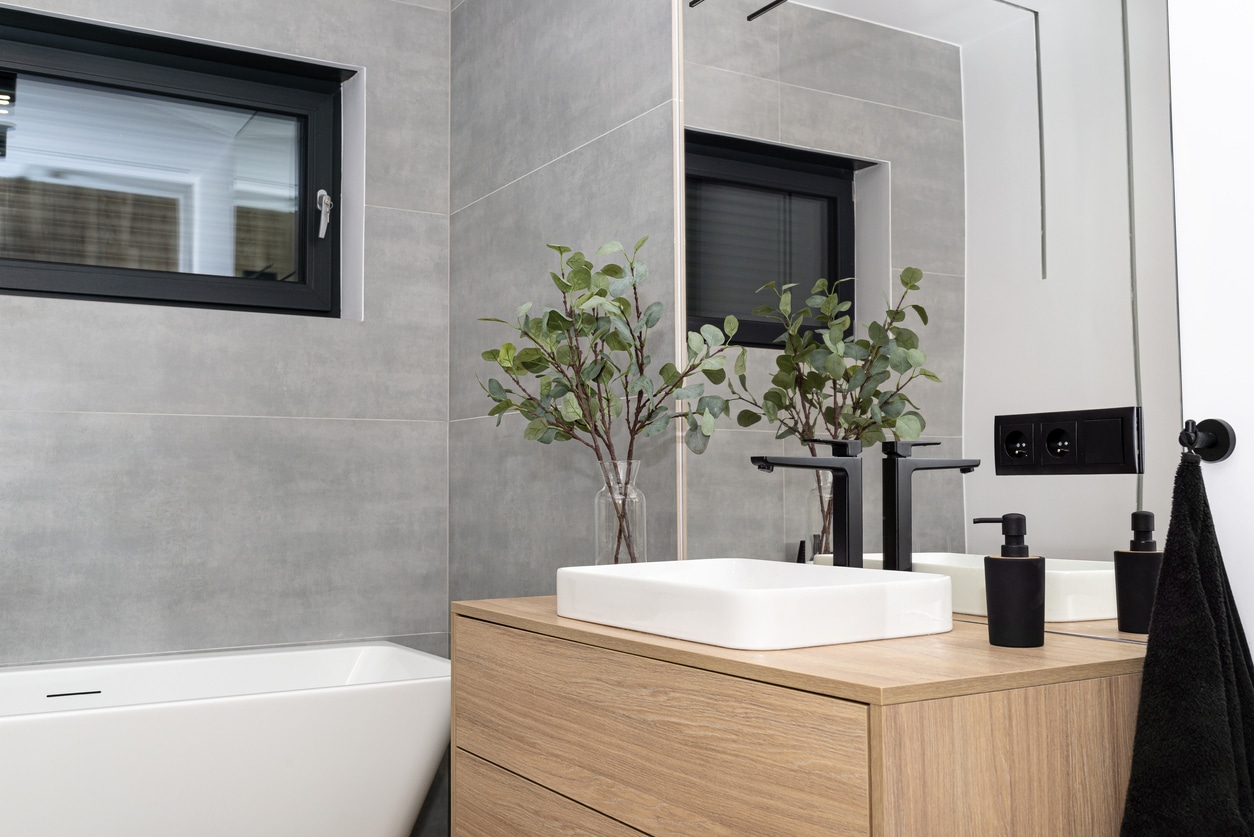
20 Best Bathroom Faucet Brands 2025
Having trouble finding the right faucet brand for your home? With this comprehensive list, we will look at the most
In home design, bathroom privacy often gets overlooked in favor of more glamorous elements like tile choices or statement tubs. But when it comes to comfort, functionality, and even home value, privacy is one of the most crucial components of a well-designed bathroom. Whether you’re sharing your space with roommates, family members, or simply want a more tranquil experience, ensuring your bathroom is a private, secure retreat can dramatically enhance your daily routine—and your property’s appeal.
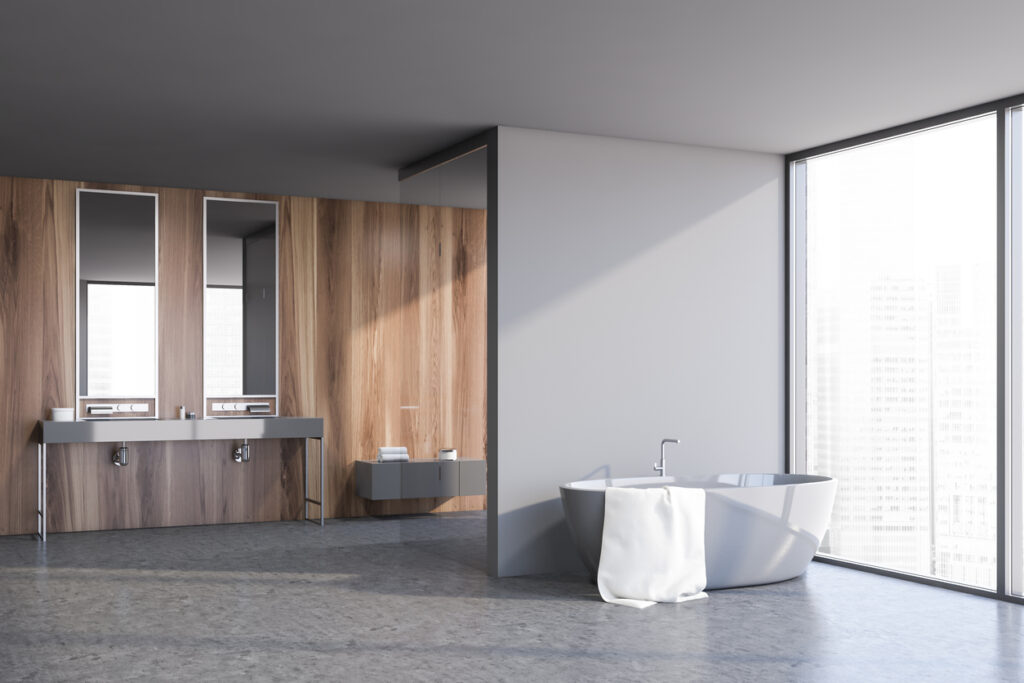
Privacy in the bathroom isn’t just a luxury; it’s a necessity. The bathroom is one of the most intimate spaces in your home—a place where you start and end your day, take care of personal hygiene, and unwind. Poor privacy can lead to discomfort, stress, and even avoidance of using the space altogether.
Here are a few key reasons bathroom privacy is essential:
According to a 2023 study by Houzz, 72% of homeowners prioritize privacy in bathroom remodels, specifically seeking layout changes and upgraded doors to reduce exposure and noise.
Bathroom privacy isn’t just about comfort—it can be a smart investment. Homebuyers are increasingly looking for thoughtfully designed, private spaces that serve both form and function. Features that promote privacy can make your home more desirable, especially in competitive markets.
Here’s how enhancing bathroom privacy adds value:
A few privacy upgrades that can make a big difference:
Investing in bathroom privacy isn’t just a personal decision—it’s a strategic one. Whether you’re remodeling for yourself or preparing your home for sale, prioritizing privacy ensures your space is functional and serene and attractive to future buyers. From thoughtful layouts to smart material choices, a subtle design element makes a big impact.
When it comes to adding privacy, design choices go beyond simply closing the door. Whether you’re working with a powder room, ensuite, or shared family bathroom, there are several high-level strategies to create a more secluded and serene space.
One of the most effective ways to increase privacy is through thoughtful spatial planning. Separating the toilet from the vanity or shower creates functional zones.
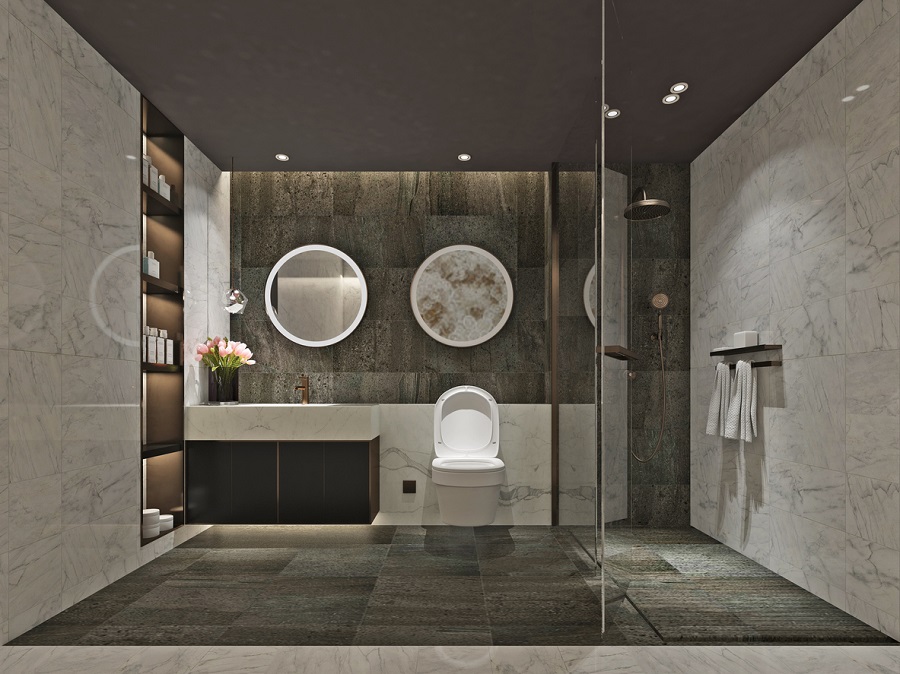
Natural light is essential in a bathroom—but so is discretion. Privacy glass allows sunlight in while obscuring the view from outside, maintaining both comfort and aesthetics.
(See detailed glass types below.)

Blinds and shades remain popular for a reason—but not all treatments are created equal.
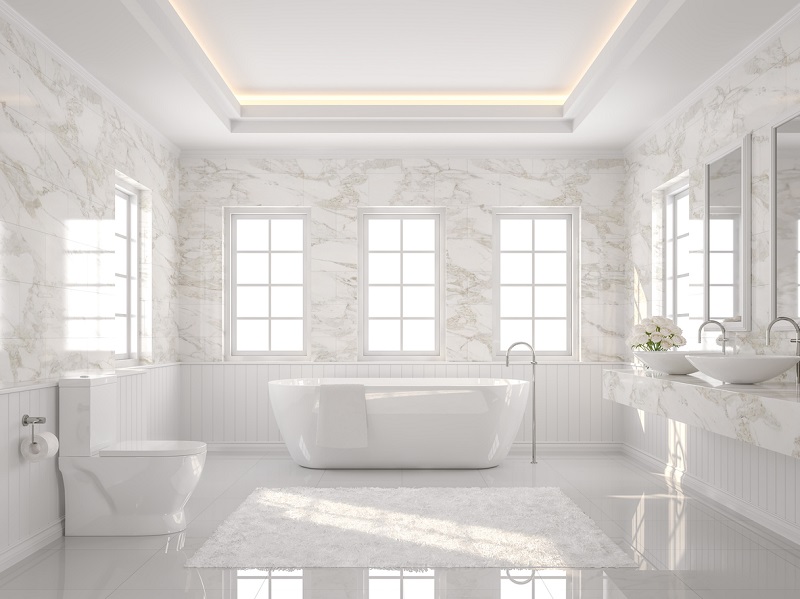
Privacy isn’t just visual—it’s also acoustic. Reducing sound transfer can make the space more comfortable and private, especially in shared walls or small homes.

For larger bathrooms or open-concept ensuites, adding a partial wall or freestanding room divider can carve out private zones without the need for full enclosures.
Pro Tip: Pair with pendant lighting or under-vanity lighting to keep the space feeling open and airy.
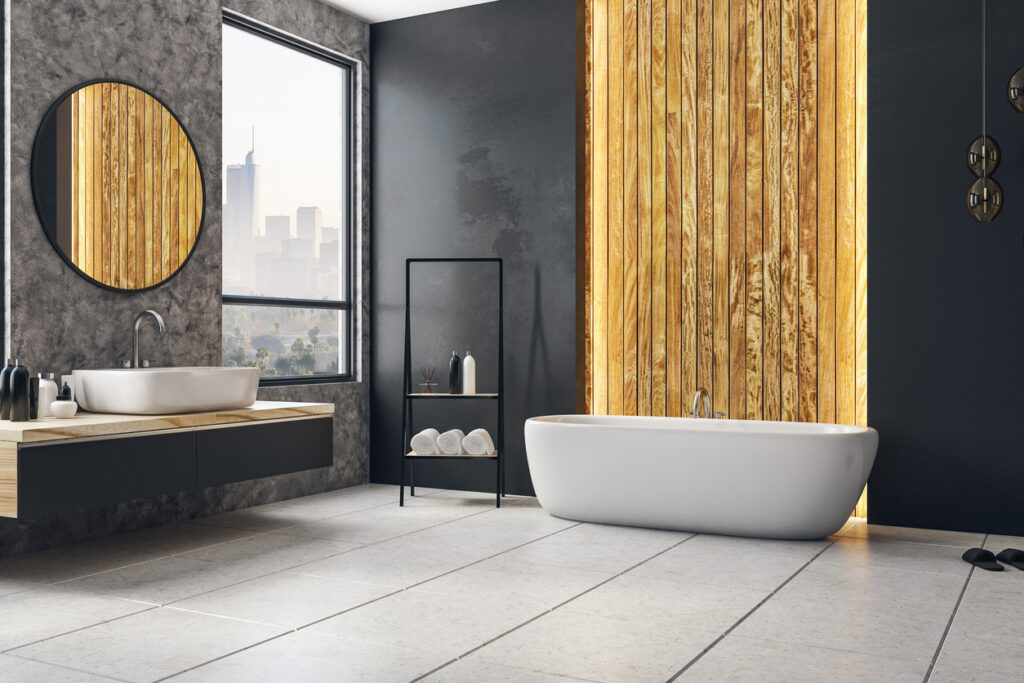
Plants aren’t just for aesthetics—they can also act as natural privacy barriers, especially near windows or between zones.
Bonus: Studies show that indoor plants can reduce stress by up to 37%—an added benefit to your private sanctuary.
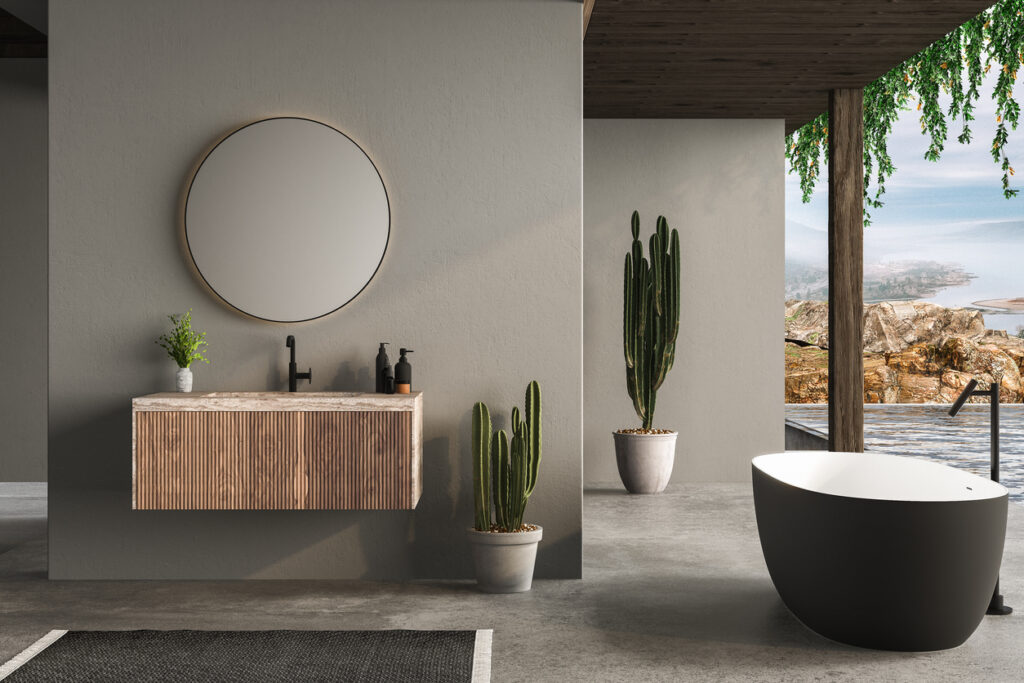
Privacy glass offers an elegant bathroom solution, striking the balance between natural light and discretion. Below are the most common types, with definitions, use cases, pros, and cons.
| Glass Type | Privacy Level | Light Transmission | Average Cost (Per Sq. Ft.) |
| Frosted Glass | High | Medium-High | $12 – $25 |
| Textured/Patterned Glass | Medium–High | Medium | $15 – $30 |
| Tinted Glass | Medium | Medium | $10 – $20 |
| Smart/Privacy Glass | Adjustable (High) | Adjustable | $90 – $150 |
| Etched Glass | High | Medium | $25 – $45 |
| Stained/Decorative Glass | High | Low–Medium | $30 – $100+ |
| Adhesive Privacy Film | Medium | Medium | $2 – $10 |
Definition: Frosted glass is chemically or mechanically treated to create a translucent, cloudy surface that obscures visibility while allowing light through.
Pros:
Cons:
Definition: This glass has a raised or pressed pattern on one or both sides, creating visual distortion that limits visibility.
Common patterns: Rain, Reeded, Hammered, Seedy
Pros:
Cons:
Definition: Glass that has been infused with a colored tint to reduce visibility and glare.
Pros:
Cons:
Definition: Electrically charged glass that transitions from clear to frosted at the touch of a button or via remote control.
Pros:
Cons:
Definition: Acid-etched or sandblasted glass has a permanent frosted or patterned design on the surface.
Pros:
Cons:
Definition: Glass that is colored or painted, often arranged in mosaic or traditional stained-glass designs.
Pros:
Cons:
Definition: Self-adhesive vinyl films that mimic frosted, textured, or stained glass and can be applied to existing windows.
Pros:
Cons:
Windows are often the first place privacy becomes an issue in the bathroom. Whether you’re dealing with street-facing glass, close neighbors, or a bathroom that shares a wall with another home, your windows can be a direct line of visibility. That’s why window treatments are one of the most effective—and immediate—ways to enhance privacy. The right solution not only blocks prying eyes but also complements the overall style and moisture demands of a bathroom space.
Privacy films are an affordable and versatile solution for bathroom windows. Static cling varieties can be easily applied and removed without damaging the glass, making them ideal for renters or those looking for a temporary solution. Adhesive options offer a more permanent fix, often mimicking the look of etched or frosted glass. Decorative versions come in a range of patterns, from geometric designs to faux stained glass, offering both function and aesthetic flair.
Top-down bottom-up shades offer flexible control over privacy and natural light. You can lower the shade from the top to let in daylight while keeping the lower portion of the window covered for privacy. This is especially helpful for bathrooms on the ground floor or those with neighboring homes nearby.
Faux wood blinds provide the elegant look of real wood with added durability and moisture resistance. They’re ideal for bathrooms because they won’t warp or crack in humid environments, and they offer adjustable slats that let you control light and visibility with precision.
Vinyl and aluminum mini blinds are budget-friendly and moisture-resistant, making them a practical choice for high-humidity spaces. While not as stylish as some other treatments, they are easy to clean and provide solid privacy when closed.
For oversized windows or sliding glass doors that open onto patios or private balconies, panel track blinds offer a sleek, modern solution. These wide vertical panels slide smoothly on a track system and are available in moisture-resistant fabrics ideal for bathroom conditions.
Waterproof roller shades are specifically designed for steamy bathrooms. Made from vinyl or PVC, these shades block visibility from the outside while maintaining a clean, minimalist look. They roll up neatly when not in use and are easy to wipe down after exposure to humidity.
Café curtains cover only the lower half of a window, providing privacy while letting light pour in from the top. Often made of cotton, linen, or lace, they add a charming and slightly vintage feel to bathrooms. While not ideal for full privacy, they can be layered with blinds or film for better coverage.
Plantation shutters offer exceptional privacy and light control with their wide, adjustable louvers. Typically made from wood or composite materials, they provide a classic and upscale look. The solid construction makes them long-lasting, and many models are treated to resist moisture and warping.
Roman shades bring softness and elegance to a bathroom space and are available in moisture-resistant fabric blends. When raised, they fold neatly at the top of the window, and when lowered, they offer full coverage. Choose materials like polyester or treated cotton to prevent mildew buildup.
Layered window treatments combine multiple types—like privacy film paired with sheer curtains or blinds with a fabric valance—to offer both function and style. This approach lets you adapt the window to your privacy needs throughout the day, while also adding texture and depth to the room design.
Creating true bathroom privacy means planning for both daylight hours and nighttime use. During the day, you want to maximize natural light without sacrificing discretion. At night, artificial lighting turns your bathroom into a glowing display from the outside if not properly managed. The goal is to strike a balance—maintaining a bright, airy feel during the day and a completely private sanctuary at night. Smart design, window treatments, and even outdoor strategies can all work together to achieve this.
Frosted or textured glass, privacy window films, and top-down shades are great solutions that allow sunlight to pour in while blurring the view from outside. These keep your space bright without exposing the interior.
Strategic window positioning—like installing high transom, clerestory, or narrow vertical windows—can bring in daylight while remaining above eye level from the outside, making them inherently private.
Landscaping elements such as tall shrubs, bamboo screens, or decorative fencing outside bathroom windows can act as a natural shield, blocking views without altering your window treatments.
At night, the contrast between a lit bathroom and the dark outdoors makes your windows completely transparent from the outside. This is when untreated glass or daytime-only films fall short. You need true nighttime solutions that work with interior lighting.
Layered window treatments—like blackout roller shades, lined Roman shades, or dual-layer blinds—offer full coverage when the lights are on. Combining these with privacy film or glass ensures flexibility around the clock.
Installing motion-activated lighting or dimmable bulbs can help limit nighttime visibility while conserving energy. You can program lights to only activate when needed, reducing prolonged illumination that exposes your bathroom to outside viewers.
| Privacy Solution | Effective During Day | Effective at Night | Maintains Natural Light | Ideal For |
| Frosted or Textured Glass | ✅ | ✅ | ✅ | Permanent privacy solution |
| Privacy Window Film (Standard) | ✅ | ⚠️ Limited | ✅ | Budget/daytime-only use |
| One-Way Mirror Film | ✅ | ❌ Fails when lights are on | ✅ | Daytime use, not at night |
| Blackout or Dual Roller Shades | ✅ | ✅ | ❌ | Full light control |
| Top-Down Bottom-Up Shades | ✅ | ✅ with layering | ✅ | Flexible privacy management |
| Privacy Landscaping | ✅ | ❌ | ✅ | Enhancing natural privacy |
| Motion-Sensing Smart Lights | ❌ | ✅ | N/A | Nighttime exposure control |
| Panels or Room Dividers | ✅ | ✅ | N/A | Flexible zone separation |
As you move forward with enhancing your bathroom’s privacy, it’s important to pause and consider the bigger picture. Privacy upgrades aren’t just about blocking views—they’re about designing a space that feels secure, comfortable, and aligned with your lifestyle. Whether you’re tackling a full remodel or making a few strategic updates, these final tips will help you prioritize what matters most and ensure your decisions stand the test of time.
Begin by examining how your bathroom connects to the rest of the home. Think about doorways, mirrors, and windows—are there any direct sightlines into the space from shared areas or outdoor views? Addressing layout first can help you reduce the need for excessive window treatments or make room for features like half-walls or dividers that enhance both privacy and function.
Not all bathrooms serve the same purpose. A primary suite has different needs than a hall bath, powder room, or kid-friendly setup. Understanding the users—family, guests, or tenants—can guide choices about features like dual vanities, soundproofing, or adjustable privacy solutions that support multiple people using the space comfortably.
Don’t trade light and air for privacy—find a way to have both. If your bathroom has large windows or limited airflow, focus on solutions like privacy glass, skylights, or layered treatments that preserve brightness and allow for ventilation while still keeping things discreet.
Privacy updates range from DIY films to full remodels, so think about how much you’re willing to invest and how long you plan to stay in the home. If you’re renovating for resale, timeless and permanent solutions like frosted glass or shutters may pay off more than trend-driven options.
A successful bathroom balances privacy and style. Choose treatments and materials that blend with your overall aesthetic—whether that’s sleek and modern, rustic and organic, or classic and cozy. This way, your privacy upgrades become an integrated part of the design rather than a visual afterthought.
Bathroom privacy is more than a practical concern—it’s a foundation for comfort, confidence, and even home value. By thinking holistically about your space, your light, your layout, and your long-term goals, you can create a private retreat that works beautifully during the day and night. Whether you opt for frosted glass, smart shades, or a simple panel screen, the best privacy solutions are the ones that make you feel at ease in your own space.
If you’re just getting started and feel overwhelmed by the options, use these tips as your blueprint—and remember, privacy doesn’t mean sacrificing beauty. In the right hands, it becomes part of the design itself.

Eric is the founder and president of Badeloft USA. He has been the president of Badeloft’s US division for over ten years and oversees all marketing and branding aspects of Badeloftusa.com.
His expertise lies in small business development, sales, and home and bathroom industry trends and information.
Contact us with any business related inquiries.
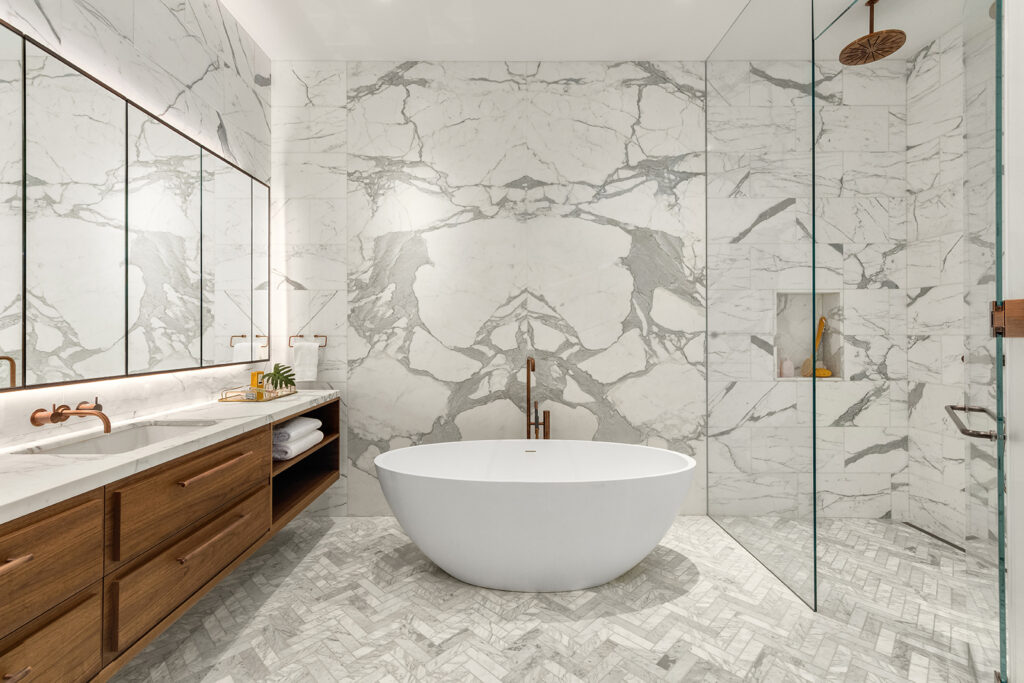
Free material samples and tub templates

Having trouble finding the right faucet brand for your home? With this comprehensive list, we will look at the most
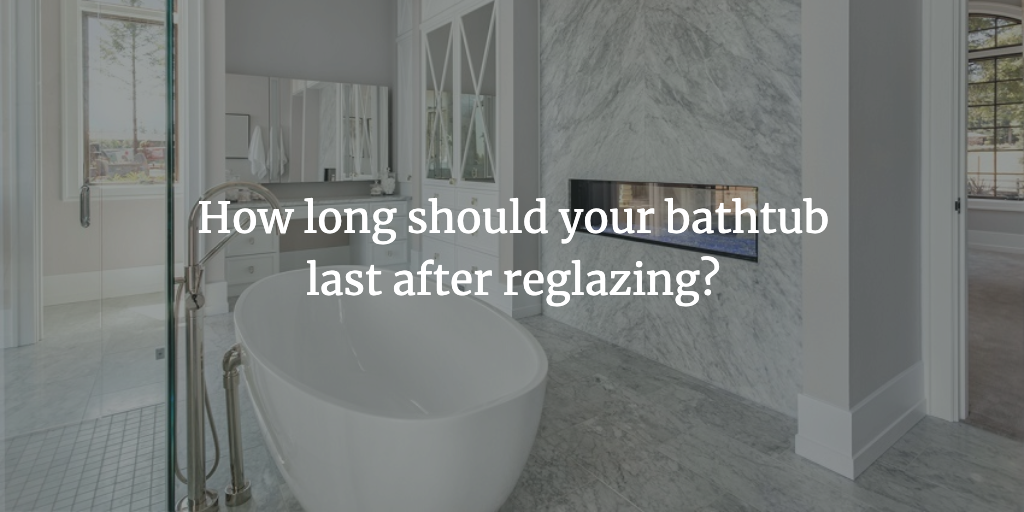
Reglazing is an excellent way of restoring your old bathtub and making it appear like new. A professional reglaze lasts
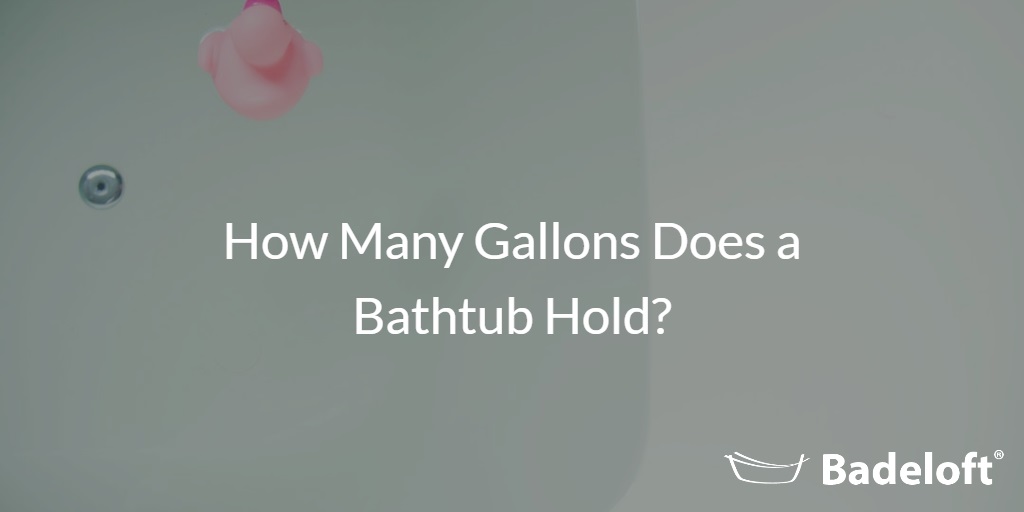
So, you’re shopping for a new bathtub and you’ve done your measurements-mapped out the space for installation, but something that

In home design, bathroom privacy often gets overlooked in favor of more glamorous elements like tile choices or statement tubs.
Fill out the form below to request a free material sample
"*" indicates required fields
"*" indicates required fields
"*" indicates required fields